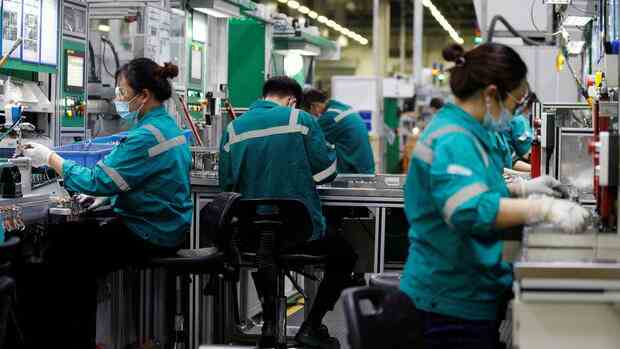Munich Former Siemens strategy chief Peter Herweck will be the new CEO of Siemens’ major European competitor Schneider Electric. The change at the top opens a new chapter in the company’s history, said outgoing CEO Jean-Pascal Tricoire on Thursday when presenting record figures. His successor has 30 years of experience in the industry and has gotten to know Schneider Electric over the past seven years.
Herweck is scheduled to take over the post in May. He had worked for Siemens for many years, including in China and in the process automation division and as head of the strategy department. In the fall of 2015 he switched to competitor Schneider Electric, and he currently heads the software subsidiary Aveva.
As the future CEO, Herweck should primarily accelerate the growth of the digital business. “The transformation of our business over the past few years positions us well for the future and our offerings have never been more relevant,” said Tricoire. He will remain on board as Chairman of the Board of Directors.
In 2022, Schneider Electric increased sales by 18 percent to 34.2 billion euros for the first time. Adjusted for portfolio and currency effects, growth was around twelve percent. The operating result increased by around 14 percent to around six billion euros, which corresponded to a margin of 17.6 percent.
Tough competition with Siemens in electrification and automation
Internally, Siemens counts Schneider Electric as one of the most important competitors against which it is measured. The two groups compete against each other in industrial automation and energy management.
Some investors see Schneider ahead in important areas. Portfolio manager Vera Diehl from Union Investment said that the French relied earlier than others on “Software as a Service” rental models (SaaS), digital solutions such as apps and on sustainability. “The green attitude has been there since 2014. Since then, it has been consistently promoted.”
In 2022, the French achieved 18 percent of their sales with software and digital services. This is significantly more than at Siemens, where the area accounted for less than ten percent of sales. By 2025, the proportion should increase to around 23 percent, said Schneider Electric.
Both groups are currently transitioning to SaaS, which is slowing growth in software sales. Because the customers now pay a monthly fee instead of the license fees in one fell swoop, as they used to.
At Siemens, 5,500 customers have now opted for the new model, which guarantees steady income over the longer term. Siemens CEO Roland Busch wants to increase digital business by more than ten percent annually.
The former Siemens manager will become the new boss of Schneider Electric in May.
(Photo: Schneider Electric)
Investors are watching the development of the two groups closely. “Siemens continues to lag far behind competitors like Schneider in terms of stock market valuation,” criticized Ingo Speich, Head of Sustainability and Corporate Governance at Deka Investments, at last week’s Annual General Meeting. The difference in ratings has widened over the past year.
Siemens has made up ground with renewed good quarterly figures. The technology group recently had a market capitalization of just over 120 billion euros. This means that the Munich company is worth almost 50 percent more than its French competitor. But Schneider is valued higher in terms of earnings.
This is probably also due to Schneider’s active portfolio policy, which accelerated the path towards software and IT. Among other things, the French had bought the British software company Aveva, which they have now completely taken over. “We now have a clean house in software,” said Tricoire. Aveva later bought the US company Osisoft for five billion dollars.
Schneider Electric
18.9
percent
was Schneider Electric’s margin in industrial automation last year.
In industrial automation, Schneider Electric was able to increase sales last year by ten percent to 7.7 billion euros, adjusted for currency and portfolio effects. The operating margin was 18.9 percent.
For comparison: Siemens was able to improve currency and portfolio-adjusted revenues in the Digital Industries division by 13 percent to EUR 19.5 billion in fiscal year 2021/22. In the first quarter of the new fiscal year – ie from October to December – sales increased by 15 percent to 5.1 billion euros. The automation business grew disproportionately strong in each case. The operating margin was recently around 22 percent.
Schneider Electric is also confident for the current year. Sales are expected to increase by nine to eleven percent on an organic basis, and the operating result by twelve to 16 percent.
More: Balance sheet check – Siemens has the strength for further acquisitions
